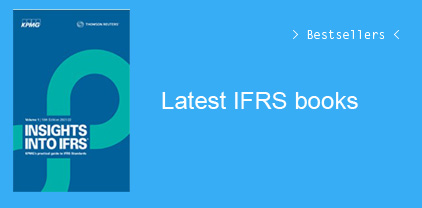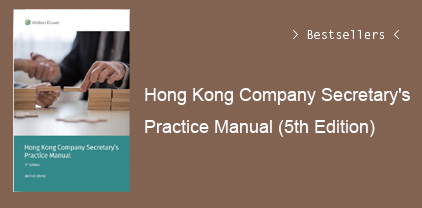Preface ix
Chapter 1: Importance of the COSO Internal Control Framework 1
The Importance of Enterprise Internal Controls 2
What Are Enterprise Internal Controls? 3
Understanding the COSO Internal Control Framework: How to Use This Book 4
Chapter 2: How We Got Here: Internal Control Background 5
Early Defi nitions of Internal Controls: Foreign Corrupt Practices Act of 1977 7
The FCPA and Internal Controls Today 8
Events Leading Up to the Treadway Commission 9
Earlier AICPA Auditing Standards: SAS Nos. 55 and 78 10
The Treadway Committee Report 11
The Original COSO Internal Control Framework 12
The Sarbanes-Oxley Act and Internal Accounting Controls 15
Notes 28
Chapter 3: COSO Internal Controls: The New Revised Framework 29
Understanding Internal Controls 30
Revised Framework Business and Operating Environment Changes 32
The Revised COSO Internal Control Framework 35
COSO Internal Control Principles 37
COSO Objectives and Business Operations 38
Sources for More Information 40
Chapter 4: COSO Internal Control Components: Control Environment 41
Importance of the Control Environment 41
Control Environment Principle 1: Integrity and Ethical Values 43
Control Environment Principle 2: Role of the Board of Directors 48
Control Environment Principle 3: The Need for Authority and Responsibility 49
Control Environment Principle 4: Human Resource Strengths 51
Control Environment Principle 5: Individual Internal Control Responsibilities 54
COSO Control Environment in Perspective 56
Chapter 5: COSO Internal Control Components: Risk Assessment 59
Risk Assessment Component Principles 60
Risk Identification and Analysis 62
Risk Response Strategies 66
Fraud Risk Analysis 69
COSO Risk Assessment and the Revised Internal Control Framework 70
Notes 71
Chapter 6: COSO Internal Control Components: Control Activities 73
COSO Control Activity Principles 74
COSO Control Activities Today 85
Chapter 7: COSO Internal Control Components: Information and Communication 87
Information and Communications: What Has Changed? 87
Information and Communication Principle 1: Use of Relevant Information 89
Information and Communication Principle 2: Internal Communications 96
Information and Communication Principle 3: External Communications 100
The Importance of COSO Information and Communication 102
Notes 103
Chapter 8: COSO Internal Control Components: Monitoring Activities 105
Importance of COSO Monitoring Internal Control Activities 106
COSO Monitoring Principle 1: Conduct Ongoing and Separate Evaluations 108
COSO Monitoring Principle 2: Evaluate and Communicate Deficiencies 112
COSO Internal Control Monitoring in Perspective 115
Note 115
Chapter 9: COSO Internal Control GRC Operations Controls 117
COSO Operations Objectives 117
Planning and Budgeting Operations Controls 119
IT Systems Operations Controls 123
Operations Procedure Controls and Service Catalogs 133
Importance of COSO Operations Controls 135
Note 135
Chapter 10: COSO Reporting Processes 137
COSO Reporting Objectives 137
COSO External Financial Reporting Controls 139
COSO Internal Financial Reporting Controls 141
COSO External Nonfinancial Reporting Controls 149
COSO Internal Nonfinancial Reporting Controls 149
Importance of COSO Reporting Controls 150
Note 151
Chapter 11: COSO Legal, Regulatory, and Compliance Objectives 153
Importance of Enterprise Compliance Controls 153
Regulatory Compliance Control Issues 155
Internal Controls and Legal Issues 157
Compliance with Professional and Other Standards 158
Chapter 12: Internal Control Entity and Organizational GRC Relationships 161
Internal Controls from an Organizational GRC Perspective 161
Enterprise Governance Overall Concepts 163
Business Entity–Level Internal Controls 167
Divisional and Functional Unit Internal Controls 175
Department- and Unit-Level Internal Controls 178
Organization and GRC Controls in Perspective 179
Note 179
Chapter 13: COSO, Service Management, and Effective IT Controls 181
Importance of IT General Controls 181
IT Governance General Controls 183
IT Management General Controls 184
Client-Server and Smaller Systems General IT Controls 188
ITIL Service Management Best Practices 191
Service Delivery Best Practices 200
Notes 201
Chapter 14: Cloud Computing, Virtualization, and Wireless Networks 203
Internal Controls for IT Wireless Networks 204
Cloud Computing and COSO Internal Controls 208
Storage Management Virtualization 214
COSO Internal Controls and Newer Technologies 215
Note 215
Chapter 15: Another Framework: COSO ERM 217
ERM Definitions and the ERM Portfolio View of Risk 218
The COSO ERM Framework Model 222
Other Dimensions of the ERM Framework 239
COSO ERM and the Revised Internal Control Framework 240
Notes 241
Chapter 16: Understanding and Using COBIT 243
An Executive’s Introduction to COBIT 244
Using COBIT to Assess Enterprise Internal Controls 252
Mapping COBIT to COSO Internal Controls 256
Notes 257
Chapter 17: ISO Internal Control and Risk Management Standards 259
Background and Importance of ISO Standards in a Global Commerce World 259
ISO Standards Overview 262
ISO Standards and the COSO Internal Control Framework 269
Notes 270
Chapter 18: COSO Internal Controls in the Board Room 271
Board Decisions and Internal Control Processes 272
Board Organization and Governance Rules 275
Corporate Charters and the Board Committee Structure 276
The Audit Committee and Managing Internal Controls 279
Board Member Internal Control Knowledge Requirements 281
COSO Internal Controls and Corporate Governance 282
Notes 283
Chapter 19: Service Organization Control Reports and COSO
Internal Controls 285
Importance of Service Organization Internal Controls 286
Early Steps to Gain Assurance: SAS 70 287
Service Organization Control (SOC) Reports 288
Right-to-Audit Clauses 290
Internal Control Limitations 292
Chapter 20: Implementing the Revised COSO Internal Control Framework 293
Understanding What Is New in the 2013 Framework 293
Transitioning to the New COSO Guidance 295
Steps to Begin Implementing the New COSO Internal Control Framework 296
Index 297

































